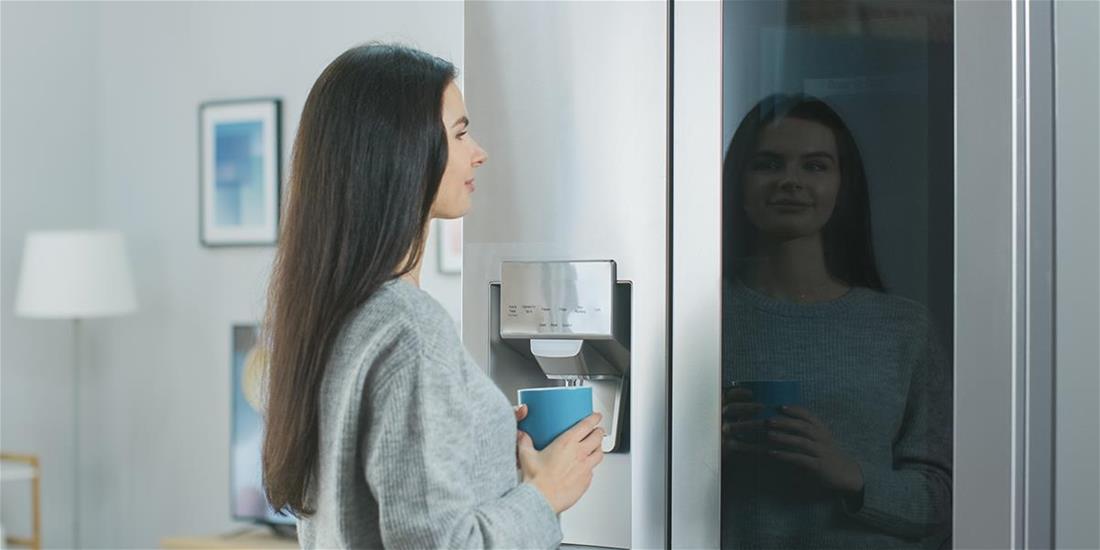
Q: I’m in the market for a new refrigerator. With all the new features offered in refrigerators these days, I don’t know where to begin. What should I take into consideration during my research?
A: The biggest consideration is what your must-have needs versus nice-to-have wants are for a new appliance. Do you want a fridge that’s reliable? Energy-efficient? Trendy? Luxurious? All good questions to ask yourself, but what do you value the most?
It’s important to consider what you hope to gain from your appliances in the scope of your kitchen space. Do you want a high-tech appliance that acts as the central hub for all your refrigeration needs, or do you want classically configured product that will get the job done? And what do you have room for?
Size & Shape
If you are not fully remodeling, the first step to buying a new fridge is to ensure it will fit in your current cabinet configuration. Carefully measure to determine the width, height, and depth available. If you’re working in a compact kitchen, a large refrigerator can overwhelm the space and make cooking awkward.
On the other hand, if you have a large family, a smaller model may not be sufficient. To right-size your next fridge, look up the capacity of your current refrigerator model. Think about how your food fits in that space. Is your freezer overflowing? Does your fridge have so much extra space it echoes? That will help you determine if you need to go bigger or downsize.
Fridge shape can also make a difference. Counter-depth refrigerators are shallower than standard and can make it easier to navigate in tight spaces. Also think about what sorts of food you’re storing—if you regularly refrigerate wide trays or casserole dishes, a standard-sized side-by-side fridge/freezer configuration may not be for you. If you’re hoping to go as energy efficient as possible, consider French doors, which generally use far less energy.
Energy Efficiency
The general rule of thumb is, the larger the refrigerator, the greater the energy consumption. The most energy-efficient models are typically 20 cubic feet. Beyond size, look for Energy Star certification, which maximizes energy and dollar savings without sacrificing features. Many Energy Star-certified fridges use less energy than a 60-watt light bulb!
See-through doors also allow you to save energy by opening them less, helping keep food fresher for longer. Door-in-door refrigerators include a tinted glass panel that illuminates when you gently knock twice so that you can easily see inside the fridge compartment without opening the door.
Style
Like most kitchen appliance finishes, stainless steel, black stainless steel, and slate rule supreme. If you’re hoping for more of a high-end, seamless appearance, panel-ready models allow you to completely customize your fridge’s exterior, including door pulls, to match the rest of your cabinetry.
Water Dispensers & Ice Makers
When it comes to your refrigerator’s water dispenser, you have options—an external dispenser for convenient access or one inside the refrigeration compartment to maintain a clean, smooth exterior. Just make sure you have access to a cold-water line in good working condition.
Having fresh, clean ice on demand is a staple of modern refrigeration. With a little routine maintenance, your fridge’s ice maker can provide clean, healthy-tasting ice on demand for years.
Purchasing the right refrigerator for your specific needs will help you achieve the perfect balance of form and function, with features that come together to make your kitchen as beautiful as it is useful. And be sure to properly recycle the old one!
Mickey Thompson is the marketing advertising coordinator at Albert Lee Appliance, a member of the Master Builders Association of King and Snohomish Counties (MBAKS). If you have a home improvement, remodeling, or residential homebuilding question you’d like answered by one of MBAKS’ more than 2,600 members, write to homework@mbaks.com.